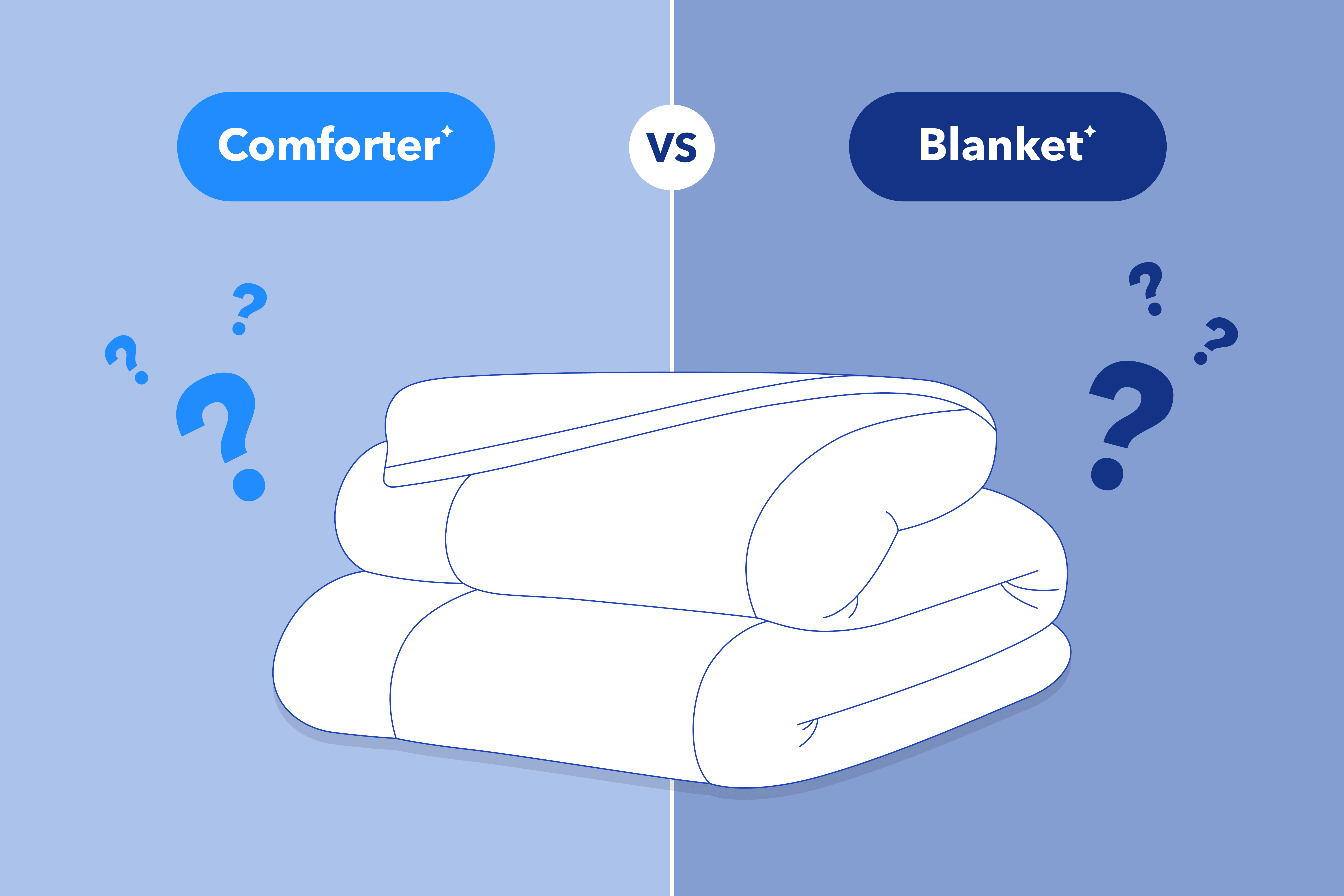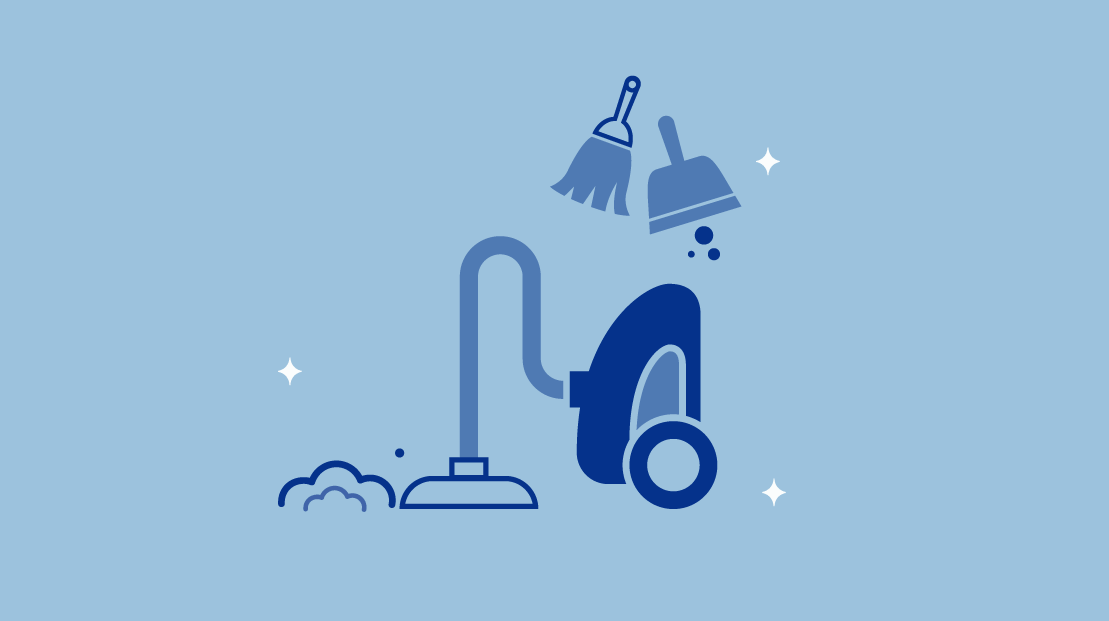Key Takeaways
- Layering and Warmth: Comforters offer multiple layers, providing extra warmth, making them suitable for colder climates or individuals who get chilly at night. Blankets typically consist of a single layer, offering a lighter cover. They are versatile for various temperatures and can be layered for added warmth.
- Material and Insulation: Comforters can be filled with synthetic fibers or natural materials like down feathers, offering different levels of insulation. Blankets come in various materials such as wool, cotton, or synthetic options, each providing unique characteristics like warmth, breathability, and durability.
- Maintenance and Cleaning: Comforters may require specific care, such as dry cleaning or following washing instructions, depending on the material and construction. Blankets are generally simpler to clean, often requiring regular machine washing with mild detergent. Care instructions vary based on the material.
Are you in the market for new bedding items and wondering whether to go with comforters or blankets? It’s no secret that comfort is essential for a good night’s sleep. That’s why it’s crucial to choose the right type of bedding that provides both comfort and style.
In this article, we will explore the differences between comforters and blankets to help you make an informed decision. So, let’s dive into the world of comforters and blankets and discover which one is best for you!
Best Amerisleep Sleep Accessories
Quick Guide: A 30-Second Summary
| Best Comforter Overall | Amerisleep Recover+ Comforter |
| Best Blanket Overall | Amerisleep Allseasons Blanket |
Comforters and Blankets: What Are They?
When it comes to bedding items, comforters and blankets are two of the most common options. But what exactly are they? Comforters are thick, fluffy bed coverings that usually come with a decorative pattern. They typically have multiple layers and are filled with insulating materials such as down feathers or synthetic fibers.
Blankets, on the other hand, are single-layer bed coverings made of woven fabric or other materials. Using multiple blankets stacked on top of each other is a more budget-friendly way to stay warm.
Blankets, whether they’re woven fabric blankets or fleece blankets, tend to trap heat effectively when layered, providing a snug and cozy environment for a comfortable night’s sleep. However, you may want to avoid using too many blankets.
Now that we have briefly defined these bedding items, let’s explore the key differences between comforters and blankets in the following sections. By understanding these distinctions, you can make an informed decision when choosing the perfect bedding option for your ultimate comfort and style in your bedroom oasis.
Layering and Warmth
Choosing the right bedding can make all the difference in how well you sleep at night. A key factor to consider when deciding between a comforter and a blanket is the number of layers they provide and how they will help you stay warm in bed.
Comforters tend to have multiple layers of insulation with a fabric shell and a fill, which makes them thicker and provides extra warmth for those cold winter nights. On the other hand, blankets usually consist of only one layer of fabric, offering a lighter cover.
If you tend to get cold during the night, a comforter’s extra layers might be a better option for you.
It’s important to note that while comforters tend to have more layers, not all comforters are created equal. Some may have a single layer, while others can have up to five or more. Some comforters also don’t have the stitching required to keep the fill from bunching up.
Similarly, some blankets may be made with multiple layers, providing extra warmth, while others might consist of just one layer of fabric.
When deciding between a comforter and a blanket, consider the temperature and climate of your ideal bedroom environment, along with your personal warmth preferences. If you live in a colder climate or find yourself getting chilly at night, a comforter with alternative filling can be a great choice.
The extra layer, featuring an insulating material, provides a fantastic way to stay warm, and you can adjust the warmth level based on how many layers you prefer. The comforter’s great layer of insulation not only adds coziness but also ensures you stay comfortably warm throughout the night, contributing to better sleep quality.
Unlike regular blankets, comforters can be paired with a duvet cover. Duvet covers enhance both style and practicality in maintaining your bedding, as they keep the comforter pristine between cleanings.
Extra Layer for Maximum Comfort
One of the biggest advantages of a comforter’s multiple layers is the ability to add an extra layer for maximum comfort and cozines. This added layer can help regulate your body temperature and provide additional warmth during cold nights, making it an excellent choice for those who want to not feel the cold at night.
Additionally, having an extra layer on top can help distribute weight and pressure more evenly, which can benefit people who have trouble sleeping due to physical discomfort. However, if you want these, you might want to consider the benefits of a weighted blanket rather than a simple comforter.
Material and Insulation
The choice of filling materials and fabrics used in comforters and blankets can significantly impact your level of comfort and quality of sleep. Comforters can be filled with either synthetic fibers or natural materials such as down feathers, providing varying levels of insulation.
If you’re looking for a more sustainable option to reduce your home’s carbon footprint, natural down is the way to go. It’s warm, lightweight, and can last for many years with proper care.
On the other hand, blankets come in a wide range of materials such as wool, cotton, and other synthetic options. The choice of fabric can make a big difference. Wool, for instance, is known for its excellent insulating properties and durability.
Cotton blankets, on the other hand, are soft, breathable, and light, making them an excellent choice for warmer climates or people who prefer a more lightweight option.
Maintenance and Cleaning
It’s crucial to know how to properly clean and maintain your bedding items like comforters and blankets to ensure their longevity. The care instructions for comforters and blankets differ due to their varying materials and construction.
Comforters
If your comforter has delicate materials or is filled with down, you may need to dry clean the comforter or follow specific washing instructions indicated on the label. Some comforters can be machine-washed, but it’s crucial to follow the recommended washing instructions to prevent damage.
A comforter has fluffier and thicker layers, using an alternative filling to keep you warm. A useful tip to keep your comforter fluffy is to add clean tennis balls or dryer balls to the drying cycle. These balls help prevent the filling from clumping together after cleaning your comforter.
See also our guide to how to make a pillow fluffy again.
Blankets
Blankets, on the other hand, can be more straightforward to clean since they usually consist of a single layer of flat sheet fabric. They can usually be washed in a regular wash cycle with mild detergent. If there are any specific care instructions, they will be indicated on the label.
It’s essential to note that certain materials like wool or silk require extra care and attention when washing. Always follow the recommended laundry care symbols and washing instructions to prevent any damage.
Specific types of blankets can also require special care. See also:
Style and Decor
Looking to update your bedroom decor? Comforters with a decorative pattern often come with a duvet cover, which is a removable cover that can be easily changed to match your bedroom’s style without replacing the entire comforter.
This means you can switch up your bedding’s look as often as you like without overspending, perfect for a budget bedroom makeover. Blankets, on the other hand, typically have a straightforward design, making them more suitable if you prefer a classic and simple look.
If you’re someone who likes to change decor frequently or wants a bedding option that allows for more visual variety, a comforter or duvet with a duvet cover is the way to go. Removable covers give you flexibility in style while still providing the warmth and comfort you need for a good night’s sleep.
So whether you opt for a removable duvet cover or a classic design, there are plenty of bedding options that offer both style and comfort. Coordinate your bed sheets with your blankets for a harmonious and stylish bedroom ensemble. Experiment with different patterns and colors for sleep to find the perfect fit for your personal bedroom decor.
Sleep Temperature
Aside from personal preferences, sleep temperature is another critical factor to consider when deciding between a comforter and a blanket. Hot sleepers or those living in warmer locations might find it uncomfortable to sleep under a thick and heavy comforter. Blankets are often more suitable for them, as they provide adequate cover without making one feel overly hot.
On the contrary, if you’re the type of person who gets cold easily or resides in colder climates, a comforter with its multiple layers and insulating materials may be the optimal choice to keep you warm and comfortable throughout the night. In addition, certain materials like down or wool can provide extra warmth to make you feel cozy even on the coldest of nights.
Some materials may be more breathable and allow for better airflow, making you feel cooler and more comfortable during the summer months. Others may wick away moisture and heat to ensure a cozy and relaxed sleep, no matter the season.
Overall, selecting the right bedding will depend on your specific sleep needs and preferences. Whether you’re a warm sleeper or tend to get cold easily, there’s a vast range of options available that can guarantee a comfortable, peaceful, and refreshing night’s sleep.
Allergies and Dust Mites Resistance
If you suffer from allergies Verified Source Centers for Disease Control and Prevention (CDC) The United States’ health protection agency that defends against dangers to health and safety. View source or are concerned about dust mites, Verified Source National Library of Medicine (NIH) World’s largest medical library, making biomedical data and information more accessible. View source the bedding you choose can play a critical role.
Comforters filled with synthetic fibers are often hypoallergenic and resistant to dust mites, making them an excellent choice for those with allergies. However, blankets made of materials such as wool or down feathers can attract dust particles and allergens Verified Source National Library of Medicine (NIH) World’s largest medical library, making biomedical data and information more accessible. View source which makes them more difficult to clean and care for.
To keep dust mites and allergies at bay, be sure to wash your bedding regularly following the manufacturer’s care instructions. Using a dust mite cover and keeping your bedroom clean and dust-free can also help reduce the accumulation of dust particles, helping you breathe easier and sleep soundly. You may even wish to consider the benefits of an air purifier.
Remember, when choosing between a comforter or blanket, allergies and dust mite resistance should be a top consideration. A hypoallergenic duvet or comforter may be the best option if you suffer from allergies or breathing issues.
Versatility and Usage
Comforters and blankets offer their unique benefits when it comes to versatility and usage. Comforters are an excellent choice for providing extra warmth and can be used as the main bed covering for a cozy and comfortable sleep experience. With a comforter, you may even be able to forgo the flat top sheet.
On the other hand, blankets are great for use as an additional layer to add more warmth on colder nights or as a standalone cover during warmer seasons. They also make a fantastic layering piece for a more complete and versatile bedding set. Opting for a cost-effective approach, you can stay warm by layering a few blankets on top of each other instead of investing in a comforter.
Ultimately, the decision between a comforter and a blanket comes down to your specific needs and personal preferences. Whether you are seeking extra warmth, an additional layer, or a great layering piece, both options have plenty to offer.
Whichever you choose, always be sure to select a bedding item that will provide you with great comfort and warmth.
FAQs
Is a comforter suitable for summer or winter?
Comforters can be used year-round, but the choice between using one in summer or winter depends on the type and thickness of the comforter. Lightweight and breathable comforters are ideal for summer, providing comfort without excessive warmth.
In contrast, heavier and warmer comforters are well-suited for winter, offering the extra insulation needed during colder months.
What is the coolest bedding option for summer?
For summer, opt for lightweight and breathable bedding options to stay cool. Consider using a thin cotton or linen sheet, a lightweight quilt, or a summer-weight comforter. These materials promote airflow and help regulate body temperature, ensuring a comfortable and cool night’s sleep during warmer seasons.
Which is better, a comforter or a blanket?
The choice between a comforter and a blanket depends on personal preferences and the desired level of warmth. Comforters are typically thicker and offer more insulation, making them suitable for colder weather.
On the other hand, blankets are versatile and come in various thicknesses, allowing for a lighter covering during warmer months. The decision ultimately hinges on individual comfort preferences and the specific climate.
Which type of blanket is warmest?
The warmth of a blanket depends on its material and construction. Generally, wool and down blankets offer superior insulation, making them warmer options. Wool blankets are known for retaining heat even when damp, while down blankets provide excellent warmth without excessive weight.
Consider the specific qualities of materials like Sherpa or fleece blankets for cozy warmth as well.
Do blankets go over or under a comforter?
The arrangement of blankets and comforters can be a matter of personal preference. Traditionally, a blanket is placed over the top sheet but beneath the comforter. This layering sequence provides added warmth and allows for easy adjustments during the night.
However, individual preferences vary. Some may choose to place the blanket over the comforter for a different aesthetic or level of warmth.
Can I use an electric blanket with a comforter?
Yes, you can use an electric blanket with a comforter. Layering an electric blanket beneath a comforter can provide additional warmth, especially during colder nights. Ensure that the electric blanket is spread evenly beneath the comforter, avoiding folding or bunching, to allow for effective and safe heat distribution.
Always follow the manufacturer’s guidelines for layering to maintain both comfort and electric blanket safety.
Conclusion
Choosing between a comforter and a blanket ultimately varies depending on your sleep preferences, needs, and lifestyle. Comforters are great for individuals who need extra warmth and insulation during colder nights, while blankets are ideal for those seeking a lighter bed covering or an additional layer of warmth.
When making a decision, consider factors such as material, warmth, maintenance, style, and allergies. Comforters often come with a decorative pattern and a removable cover, allowing you to change the style of your bedding without replacing the entire comforter.
Whether you choose a comforter or a blanket, investing in high-quality bedding items can enhance your sleeping experience and contribute to a cozy and relaxing atmosphere in your bedroom oasis. Sweet dreams!
About the author
Gaurav Roy is a versatile writer who began writing professionally in 2017. Since then, he has assisted over 50 companies in various domains, including eCommerce, blockchain, cybersecurity, and online marketing. His continuous pursuit of learning new skills reflects his dedication to staying updated in a fast-paced industry. Gaurav's passion for gaming and knowledge acquisition enhances his ability to provide valuable insights
View all posts





